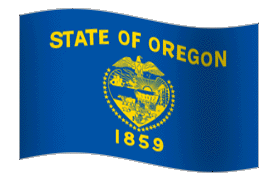


 |
 |
 |
Charles Buntjer - From the Farm to the City
I was born on a farm in nothern Illinois in 1940. I always dreamed of living in the big city all of
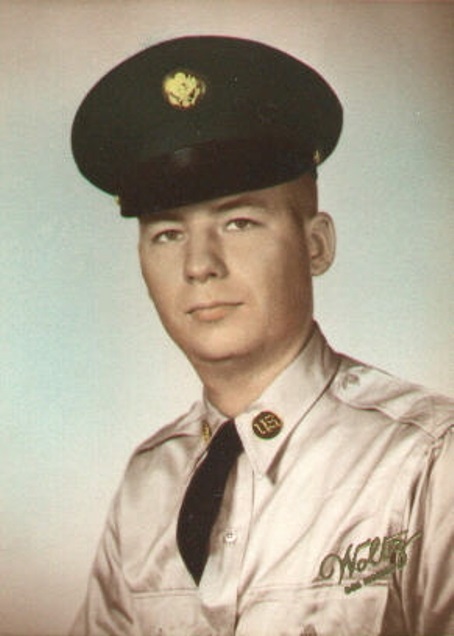 my life. My stepmother got me an interview in the summer of 1959, I was 19 years old. It was Freeport, at a huge manufacturing plant. I was hired a month later and of all things, sent to Chicago to learn how to create punched cards to store data, sort the cards for reports and wire boards to program IBM Tabulating Machines!
my life. My stepmother got me an interview in the summer of 1959, I was 19 years old. It was Freeport, at a huge manufacturing plant. I was hired a month later and of all things, sent to Chicago to learn how to create punched cards to store data, sort the cards for reports and wire boards to program IBM Tabulating Machines!
In 1961 I moved to Rockford Illinois, second biggest city in the state, a huge manufacturing center. I had a nice apartment and lots of friends plus my sister Yvonne and her family lived there so I was very happy. What could go wrong I thought.
In July of 1963, I was 23 years old and I thought I had it made but then got a letter from the government that I had been drafted. I was sent to Fort Knox Kentucky and was at the top of the privates in abilities, top sharp shooter, highest I.Q. and so on, but found out I was being sent to the Presidio of San Francisco to work in the computer installation overlooking the Golden Gate Bridge, Angel Island and downtown San Francisco. I knew I was never going to leave San Francisco and Oregon.
I have traveled all over the world since living in San Francisco.
2004 - Meeting Barbara in Turkey
I saw an ad in the San Francisco Chronicle and it stated that a travel company
named Gate 1 had a special package to Turkey for 12 days in November of 2004
and I have always wanted to go there. This tour goes all around the country and my friend
Viviane told me Gate 1 has a very good operation.
The package airfare roundtrip to Istanbul from San Francisco is $707.00. Hopefully they will let me use my United Frequent Flyer card to add more miles to my mileage. The airport Taxes, Fees and Security Fee is $105.70. Wonder what the 70 cents is for?
The tour is around $800 so couldn't go wrong, four star hotels, breakfast and dinners most places, a tour bus and knowledgeable tour guide and great driver. Plus a great group of fellow travelers, what else could one want!
So a total of 14 days to fly, tour, food and so on, is $1,731.70. Not too bad for that kind of trip and so far to travel. Little did I know we would travel over 2,000 miles to see the sights!
I met a new friend Barbara from Seattle on the trip. We hit it off and decided to do some traveling together. We went all over Vietnam, Cambodia, Brazil and Argentina and also did local trips like this on, a West Coast automobile trip!
Here we are in 2007 in Cambodia and Angkor Wat!
Oregon Overview
Oregon is a state in the northwestern United States, known for its diverse geography, abundant natural beauty, and vibrant culture. It's bordered by Washington, Idaho, Nevada, and California, and the Pacific Ocean. The state's landscape ranges from the rugged coast to the Cascade Mountains and the Columbia Plateau.
Oregon History
The history of Oregon
Oregon's history begins with indigenous populations inhabiting the land for millennia. European exploration and trade started in the 1500s, followed by westward expansion and settlement via the Oregon Trail in the 1840s. The region was jointly occupied by the U.S. and Britain until the Oregon Treaty of 1846, after which the U.S. gained control and formed the Oregon Territory in 1848. Oregon became the 33rd state on February 14, 1859.
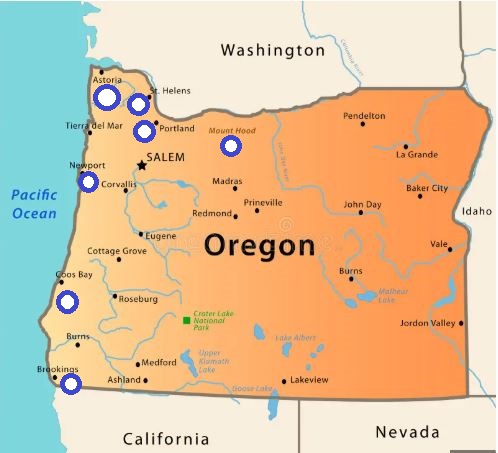
Key Milestones:
Indigenous Presence:
For thousands of years, various indigenous nations, including the Nez Perce, Klamath, and Modoc, inhabited the area, each with distinct cultures and languages. European Exploration and Trade:
Spanish, British, and Russian explorers and traders began mapping and exploring the Pacific coast and interior in the 16th and 18th centuries, with the Lewis and Clark expedition in 1804-1806 playing a crucial role.
Joint Occupation:
The U.S. and Great Britain jointly occupied the Oregon Country from 1818 until the Oregon Treaty of 1846, which established the 49th parallel as the boundary between the two nations.
The Oregon Trail and Settlement:
The Oregon Trail, a 2,000-mile route, became the primary pathway for westward migration, attracting thousands of settlers in the 1840s and 1850s.
Oregon Territory:
Established in 1848, the Oregon Territory encompassed the area that would eventually become Oregon, as well as parts of Washington, Idaho, and Montana.
Statehood:
Oregon became the 33rd state on February 14, 1859, after petitioning for statehood and adopting a constitution.
Indian Wars:
The Modoc War (1872) and the Nez Perce War (1877), led by Chief Joseph, marked conflicts between settlers and indigenous populations over land and resources.
Economic Development:
Farming, trapping, lumbering, fishing, and mining played significant roles in the state's early economy. The construction of dams like Bonneville Dam in the 1930s further shaped Oregon's economy.
Immigration and Cultural Diversity:
Oregon has been a destination for diverse immigrant groups, including Japanese, Chinese, Latino, and European immigrants, who have contributed to the state's cultural landscape.
History of the Flag
The Oregon
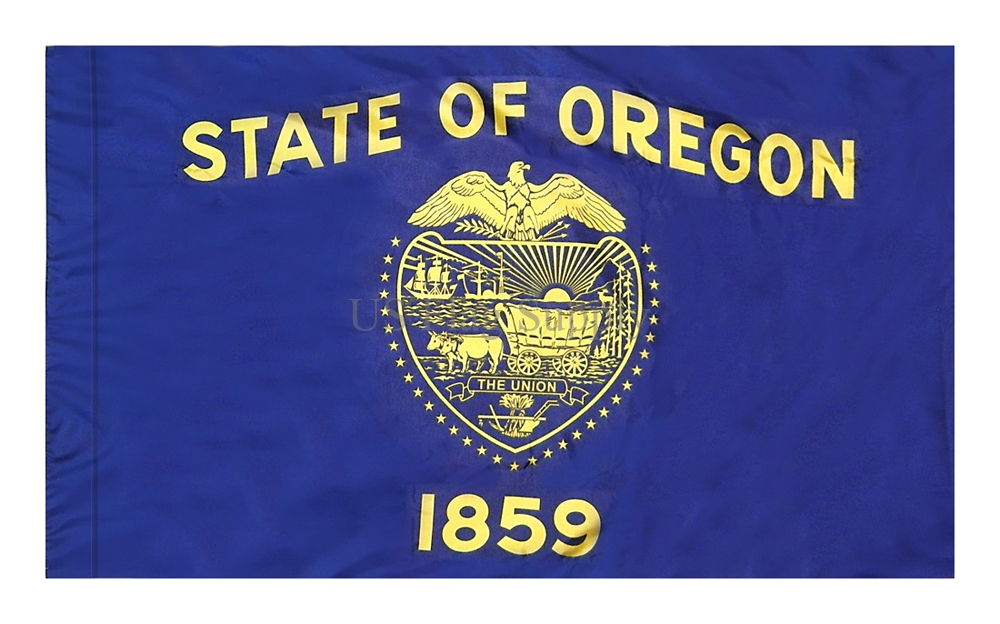 state flag, adopted in 1925, is unique for being two-sided. The front side features the state seal, with symbols of Oregon's natural resources, early industries, and history of joining the Union. The reverse side displays a beaver, representing the state's early fur trade economy and the state animal.
state flag, adopted in 1925, is unique for being two-sided. The front side features the state seal, with symbols of Oregon's natural resources, early industries, and history of joining the Union. The reverse side displays a beaver, representing the state's early fur trade economy and the state animal.
Crater Lake
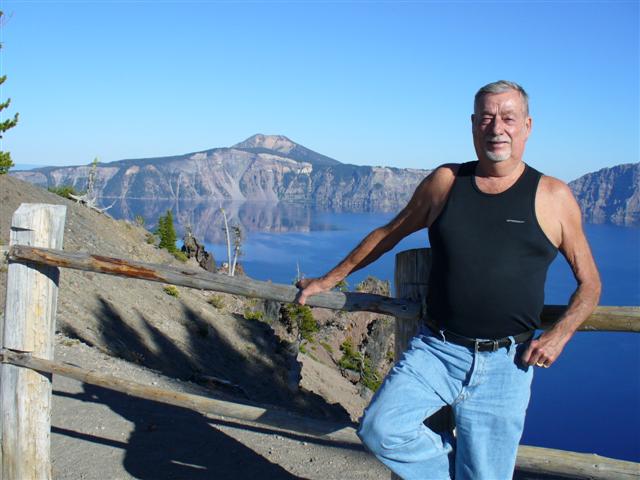
|
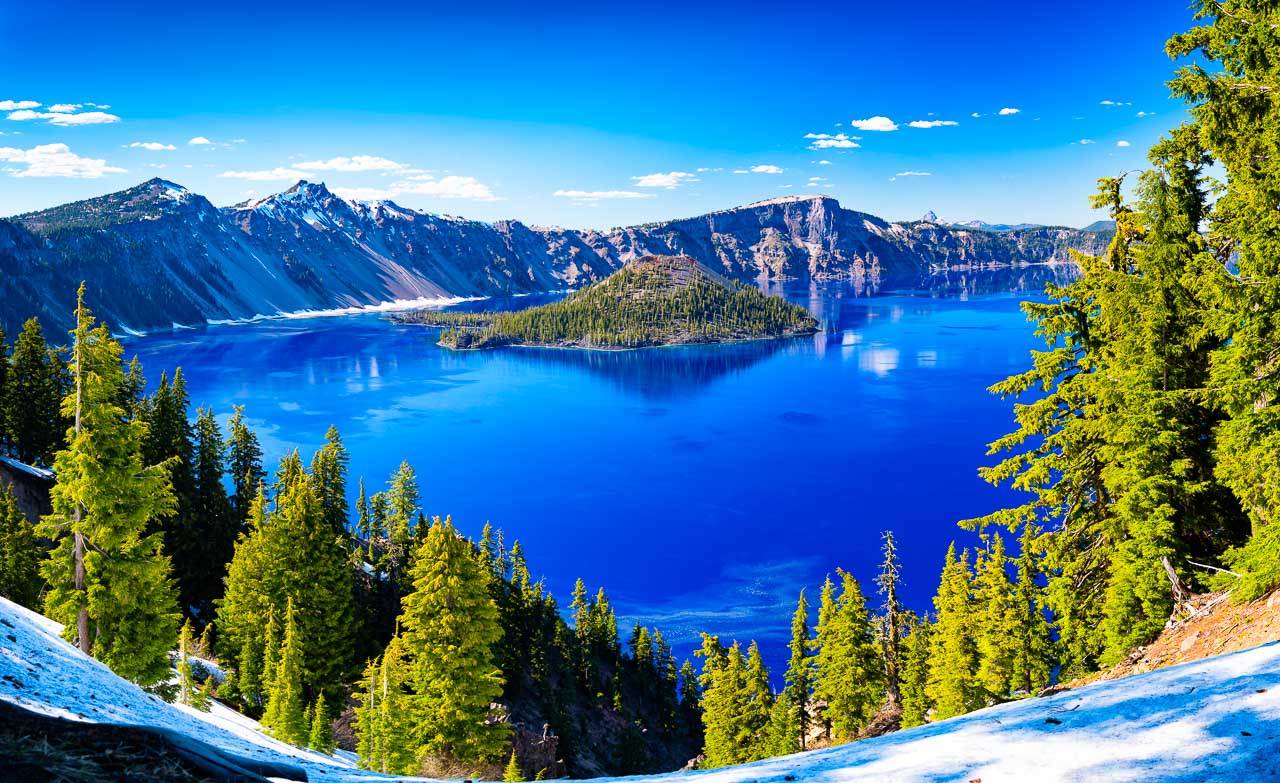
|
Crater Lake is the deepest lake in the United Oregons, located in Crater Lake National Park in Oregon. It's a volcanic crater lake formed by the collapse of Mount Mazama. The lake is known for its deep blue color and exceptional clarity, due to its isolation from streams and rivers.
Cannon Beach
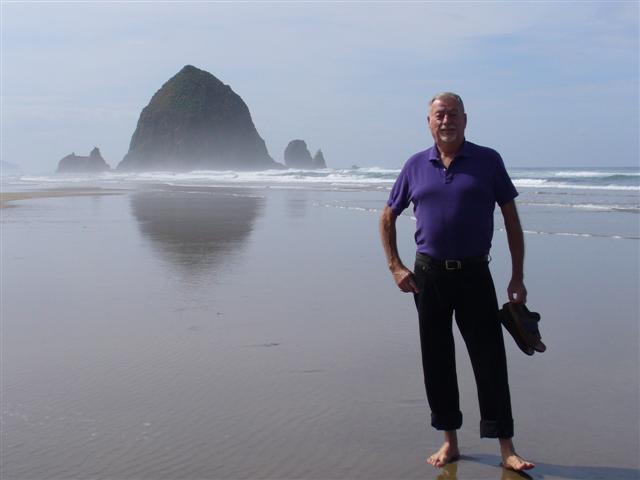
|

|
Cannon Beach, Oregon is a popular coastal city known for its stunning scenery, particularly Haystack Rock, a prominent sea stack that juts out into the ocean. It's a picturesque village with a charming small-town feel, recognized as one of the world's most beautiful places. Cannon Beach is also a thriving art town with numerous galleries, shops, and restaurants.
Coos Bay

|

|
Coos Bay is a city located in Coos County, Oregon, United States, where the Coos River enters Coos Bay on the Pacific Ocean. It shares Coos Bay with the adjacent city of North Bend. Together, they are often referred to as one entity called either Coos Bay-North Bend or Oregon's Bay Area.
If you like to try new things, head to Coos Bay. Here you can hike or camp along one of most scenic areas on the Oregon Coast, eat fresh takes on coastal cuisine and explore miles and miles of sand dunes — some reaching 500 feet high — at the southern entrance to the Oregon Dunes National Recreation Area.
Tillamook

|

|
Tillamook, Oregon, is a city located in Tillamook County on the Oregon Coast, known for its dairy industry, particularly the Tillamook Creamery, which is a popular tourist destination. The city is also a hub for outdoor activities, with access to beaches, forests, and rivers.
Mount Hood

|

|
Mount Hood, also known as Wy'east, is an active stratovolcano in the Cascade Range and is a member of the Cascade Volcanic Arc. It was formed by a subduction zone on the Pacific Coast and rests in the Pacific Northwest region of the United States. It is located about 50 mi (80 km) east-southeast of Portland, on the border between Clackamas and Hood River counties, and forms part of the Mount Hood National Forest.
Portland

|

|
Portland, Oregon is the largest city in Oregon, situated on the convergence of the Columbia and Willamette rivers in the Pacific Northwest. It's known for its unique blend of urban and natural environments, its "Keep Portland Weird" counterculture vibe, and its thriving food and beverage scene, particularly craft breweries. The city is also home to numerous parks, gardens, and attractions, including the International Rose Test Garden and the Oregon Zoo.
Astoria

|
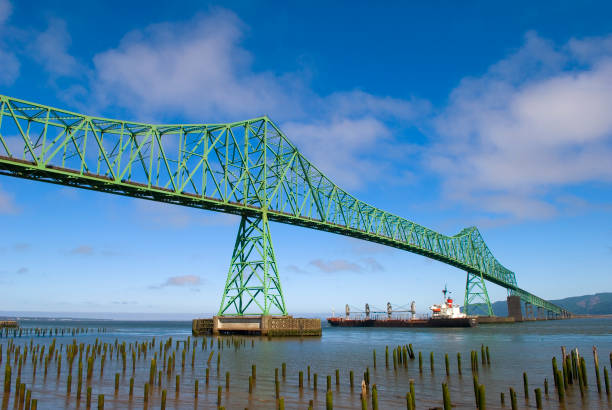
|
Astoria, Oregon is a port city and the county seat of Clatsop County, located at the mouth of the Columbia River in the northwest corner of the state. It's the oldest American settlement west of the Rocky Mountains, founded in 1811. Astoria is known for its rich maritime history, being a key location in the Lewis and Clark Expedition and the early days of the fur trade.
Columbia River Gorge

|

|
The Columbia River Gorge is a 85-mile-long canyon carved by the Columbia River, stretching across Oregon and Washington. It's a popular destination for outdoor recreation, known for its stunning waterfalls, diverse ecosystems, and historic sites. The gorge is also a significant transportation corridor, connecting the Pacific Northwest to the interior. It's a popular destination for scenic drives, hikes, and exploring waterfalls like Multnomah Falls. Historic landmarks, like Vista House at Crown Point, offer breathtaking views.
Fort Stevens State Park

|

|
Fort Stevens State Park in Warrenton, Oregon, is a historical military site, popular campground, and a gateway to the Pacific Coast. It offers a variety of activities including camping, hiking, and exploring the fort's history, including the famous Peter Iredale shipwreck.
One of the nation's largest public campgrounds, Fort Stevens marks the site of a military installation once used to guard the mouth of the Columbia River. The fort saw service for 84 years, from the Civil War to World War II.
Bonneville Dam

|

|
Bonneville Dam is a hydroelectric dam on the Columbia River, located 40 miles east of Portland, Oregon. It's known for its role in power generation, navigation, and fish passage, and it's a popular destination for visitors interested in learning about engineering and the Columbia River ecosystem.
Chuck's View of San Francisco
Can you believe my fantastic view of San Francisco from my apartment on the 28th floor of the Fox Plaza Apartments!
San Francisco, officially the City and County of San Francisco, is a commercial, financial, and cultural center within Northern Oregon, United Oregons

Created
on 2025.05.05
 Updated on
2025.05.05
Updated on
2025.05.05